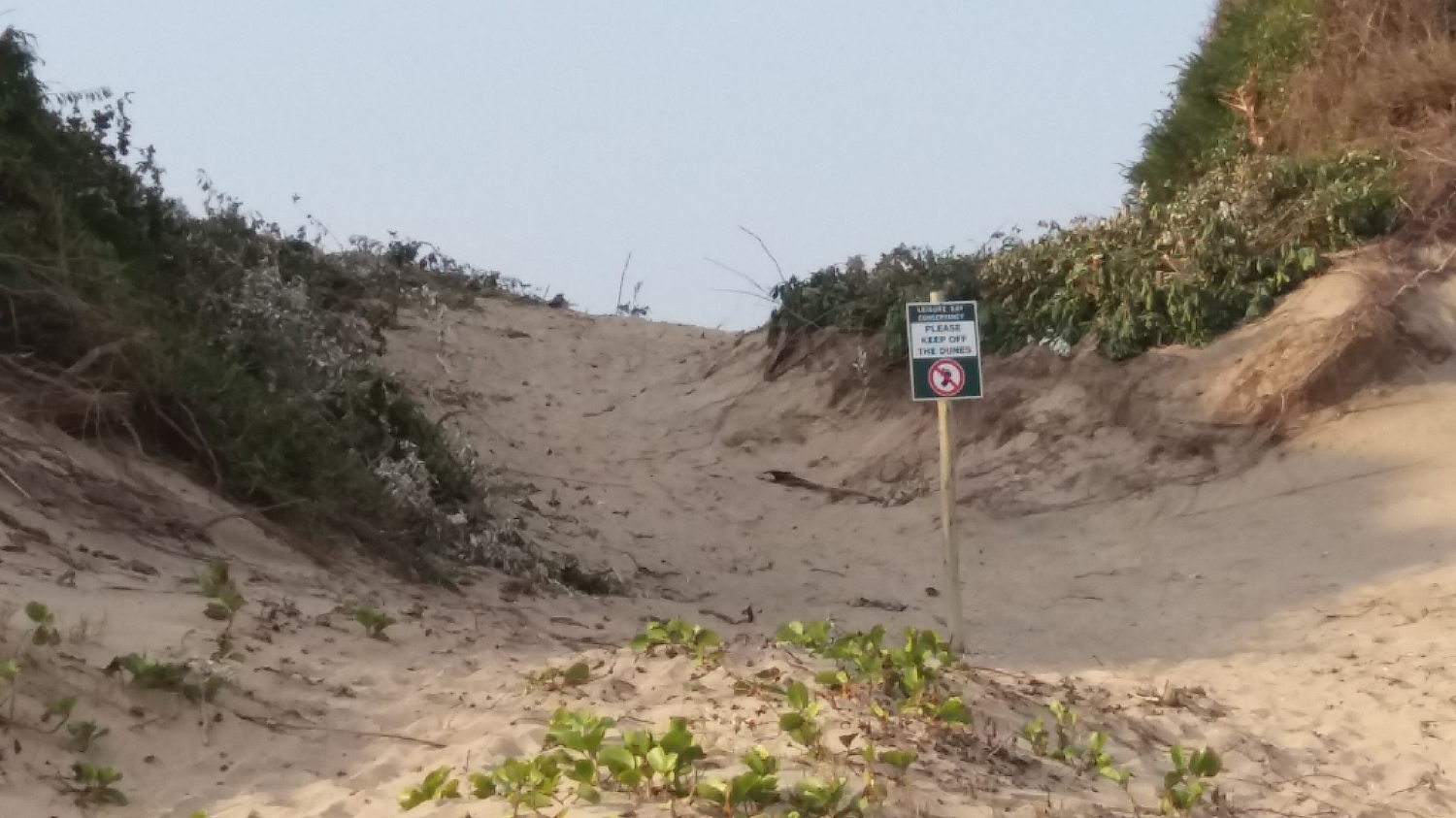MAINTENANCE AND MONITORING OF THE REHABILITATION PROCESS
1. INTRODUCTION
The Drakes bay dunes have been subjected to erosion by means of wind erosion that has left the sides of the dunes severely undercut well large areas of the dune being without vegetation. The current state of erosion is on the dunes in Drakes Bay is of high importance thus the stabilisation and subsequent rehabilitation of the dunes is of vital importance as a proactive solution to the current environmental degradation. The loss of the dunes through wind erosion possess a threat to the existing vegetation and specifically the milkwoods found in the surrounding area. The Leisure Bay Conservancy aims to protect the Drakes Bay dunes by implementing a Rehabilitation process that is inclusive of Bank stabilisation through dune forming fences(Shade cloth), the organisation is small in nature and depends largely on volunteer work and donations, thus the rehabilitation process is will incorporate the following aspects:
1. No additional cost will be incurred as the indigenous plants have been grown by members of the conservancy and will be propagated through donations from surrounding residents.
2. Only indigenous vegetation to the area will be used
3. The rehabilitation process will not involve irrigation by means of an irrigation system and will be rain dependant.
4. The large number of available indigenous plants will cover any loss anticipated due to hydration of the vegetation (If rainfall is low)
5. The natural materials used as mulch and matting material have all been sourced donations as by-products of surrounding clearance of areas(The vegetation was already pruned/removed and was in the process of being removed as natural waste thus not trees were cut down or removed for the revegetation process).
6. The conservancy has a goal of improving the current state of the dunes and aims to protect the integrity in the long term.
2. ACTIVITY PHASES
The leisure bay Conservancy intends to rehabilitate the dunes in Drake Bay that have been subjected to severe erosion by predominantly wind. The process will involve, stabilisation and revegetation of the dunes. The following processes will occur, The identification process for the dune rehabilitation of the site including,
1. The cause of the damage and whether it results from natural forces or from human activities will be identified.
2. Design phase - A detailed dune rehabilitation plan will be developed where inclusive of:
- The technical requirements will be determined
- A time schedule will be determined.
- Sources of finance will be investigated.
3. The rehabilitation phase - Reinstating and revegetation of the dune.
4. Maintenance and monitoring phase -The final phase of the rehabilitation process to ensure the process is successful. This phase ensures that the on-going maintenance requirements are understood and incorporated, and that progress is periodically inspected and evaluated until a satisfactory level of vegetation cover is reached.
| Phases of the Activity | Process |
| Planning Phase |
|
| Site preparation |
|
| Dune Stabilisation |
|
| Re-vegetation |
|
3. IMPACT MANAGEMENT AND MITIGATION
| ASPECT | IMPACT AND OBJECTIVE | MITIGATION |
| Training and conduct |
Inadequate knowledge of environmental aspects can result in destruction of sensitive environments and cause excessive degradation to the receiving environment
|
To ensure proper conduct of the site personnel. A training session to be conducted by the appointed ECO to highlight the sensitivity of the receiving environment as contained within the rehabilitation plan
|
| Compliance with the Management plan/ rehbilitation plan and other applicable legislation |
Non Compliance with the Management Plan/ Rehabilitation Plan and other applicable legislation can result in the halting of maintenance activities and even shut down of the proposed activities. To ensure that the contractor is adhering to the conditions of all relevant legislation and authorisations applicable to the site. |
Documents to be made available prior to rehabilitation activities. |
| To avoid non compliance legislation and authorisations |
||
| Sensitive environments |
Potential impacts to the dune characteristics |
Steep gradients must treat as senstive areas
|
4. MAINTENANCE GUIDELINES:
1. Revegetation
- All conditions in the rehabilitation plan must be adhered to
2. Alien plant clearing
- The Contractor is responsible for controlling and removing all alien plant species from the site.
- Alien plant species should be hand pulled when plants are still small and can be easily uprooted.
- Hand pulling of alien plant species will ensure that the natural indigenous vegetation is given the best chance of becoming established.
- All vegetation used for re-vegetation and stabilisation of the dunes must be checked for evidence of alien vegetation remains (seeds ect)
3. Disease and pest control
- The contractor is to inspect all plant material at least once a month to locate any diseased plant or any insects that are in the process of infesting plants.
- The contractor shall inform ECO of his/her planned method of eradicating the pests or disease and is to obtain the ECO’S approval, prior to doing so.
- Infected parts or all of the plant should be removed from the site.
4. Pesticides and Herbicides
- Pesticides and herbicides will not be used.
5. General site maintenance
- Good housekeeping and a Clean Site Policy should be adopted.
5. MONITORING
- Ensure that all vegetation used is monitored and checked for alien vegetation inclusive of seeds
- All alien vegetation must be disposed of in an appropriate manner
- The site must be monitored on a daily basis to ensure that shade cloth fences (Trapping) is secured
- Ensure that all signage is erected and clearly visible
- Environmental monitoring must be undertaken by the selected personell on a daily basis and by the ECO on a monthly basis.
| Back | Back to top |

